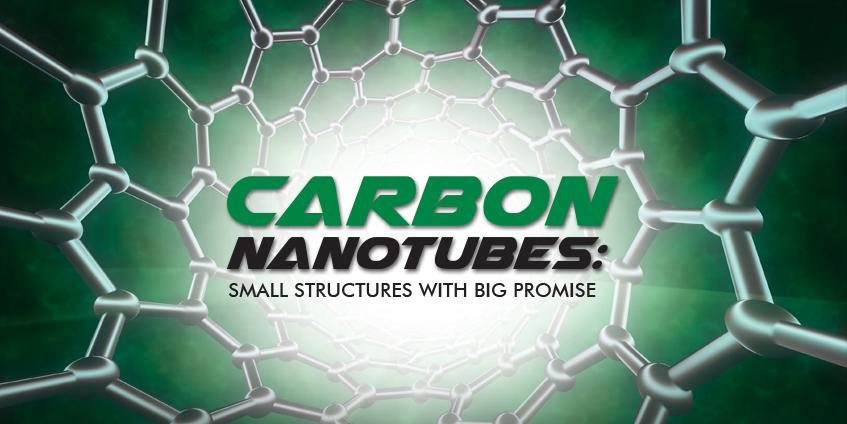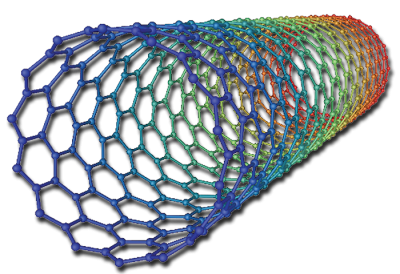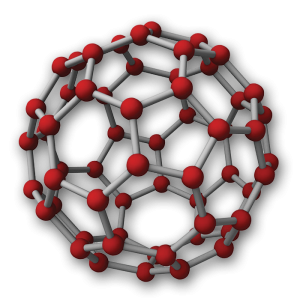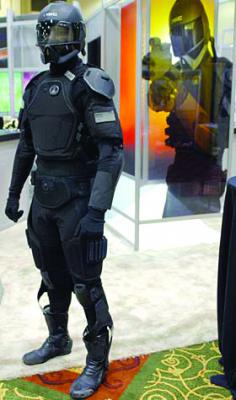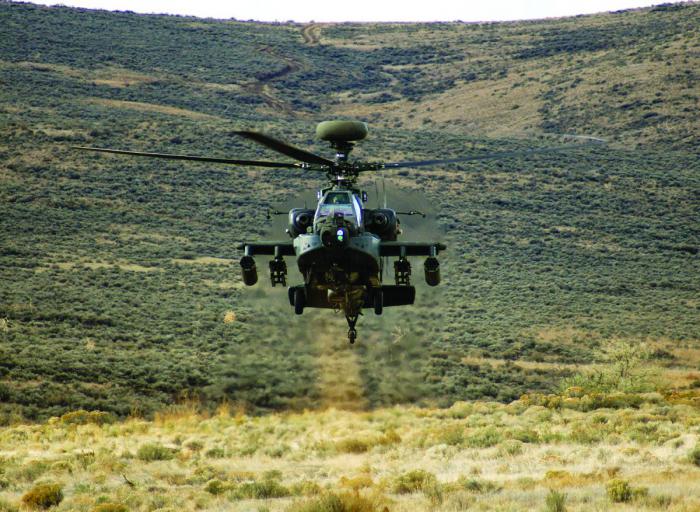The unique physical, electrical, and molecular properties of carbon nanotubes (CNTs) cause them to be the focus of research for a wide range of applications. While commercial application for CNT technology is a central driver for much of this research, the Defense industry is also investing heavily in CNT research initiatives and manufacturers. And the technology is already finding its way into several military applications. This article explores ways in which CNT technology is currently being applied in products geared for the U.S. military, as well as some of the more promising future applications. Even some “commercial”applications of CNTs have directly or indirectly benefitted the Warfighter.
CNTs, illustrated in Figure 1, are tiny (1 nm in diameter for single-walled tubes) molecules of pure carbon. They were accidentally discovered in the 1950s by Roger Bacon of Union Carbide while he was studying carbon at its triple point (the temperature and pressure at which an element can exist in a stable form as a solid, liquid, and gas). The tiny hollow tubes of carbon that he observed appeared to have a similar regular spacing as that seen in planar graphite [1].
Figure 1: Single-walled “Zig-Zig” Carbon Nanotube.
The discovery remained a curiosity until the mid-1980s when a microscopist discovered the spherical molecular structure illustrated in Figure 2. The spheres were dubbed “buckyballs” due to their similarity to the geodesic domes made famous by Buckminster Fuller.
Figure 2: C-60 Buckyball.
It was soon realized that buckyballs were one of an entire class of carbon molecules now named fullerenes, which include the hollow tubes Bacon had observed. Each carbon atom in a fullerene molecule bonds with three other carbon atoms, and the molecule has exactly 12 pentagonal faces, although fullerenes can have a differing number of hexagonal faces. CNTs are fullerenes that have a hollow tubular structure; they can exist as single-walled carbon nanotubes (SWCNT) or multi-walled carbon nanotubes (MWCNT) forms. Being pure carbon and of a near-defect-free molecular structure, an SWNT is normally 1 nm in diameter, yet it has the highest tensile strength of any known material. With CNT’s specific strength approximately 200 times greater than that of steel, and yet 5 times the elasticity of steel at only 50% of the density of aluminum, these mechanical properties alone would cause CNTs to be of great interest to structural designers, offering the potential for immense strength with low mass.
Being pure carbon and of a near-defect-free molecular structure, an SWNT is normally 1 nm in diameter, yet it has the highest tensile strength of any known material. With CNT’s specific strength approximately 200 times greater than that of steel, and yet 5 times the elasticity of steel at only 50% of the density of aluminum, these mechanical properties alone would cause CNTs to be of great interest to structural designers, offering the potential for immense strength with low mass.
Depending upon how the CNT atoms are aligned, the CNT can act either as an electrically conductive metal or as a semiconductor. As conductors, CNTs can provide 1,000 times the current-carrying capacity (per equivalent mass) as copper. CNTs also exhibit optical and thermal conduction properties that can be exploited for various applications Doping, where certain impurities are introduced into the structure, allows specialized CNTs to function as highly specific and sensitive chemical sensors.
While new applications for CNTs continually arise, the primary reason that CNTs have not yet fully lived up to their potential is the difficulty in manufacturing them with the “right” properties for the desired application. With both the Defense and public sector industries investing heavily into CNT research, however, it is fully expected that manufacturing process innovations will help to solve the manufacturability issues. Companies such as Nanocomp Technologies, Inc., a partner of the Department of Defense (DoD), is currently one of the leading manufacturers of CNT-based materials.
ARMOR
A likely use of CNTs for the military market will be lightweight body armor, as pictured in Figure 3. SWCNTs exhibit an extremely high elastic modulus and a high strain at tensile failure. These properties give them an energy absorption capacity 10 times greater than the fiber materials normally used in soft body armor. Not surprisingly, CNT fibers have already found their way into soft armor products such as the ones manufactured by AR500, Block Textiles, Amendment II, and NanoRidge (and their customer Riley Solutions, Inc. [RSI]). In fact, the product made by NanoRidge/RSI was chosen by the Defense Advanced Research Projects Agency (DARPA) to undergo testing and evaluation. Yet another company, Nanocomp, has been working with the U.S. Army to develop similar armor using Nanocomp’s exclusive processes. With the use of CNT fibers, along with other materials such a Kevlar, thinner and lighter body armor can provide protection from level IIIA threats and blunt trauma, and it can be used in conjunction with hard armor [2, 3].
Figure 3: CNT-Based Body Armor.
The aforementioned hard armor is typically manufactured from a ceramic such as silicon carbide or alumina. Although ceramics are quite hard, they are also brittle. Experimentation has shown that by adding just 4% (by volume) of CNT fibers to alumina, the fracturing toughness can be increased by up to 94%. Composites of liquid crystal polymers with CNTs could also be cast or molded into armor plates and helmets [2].
Clearly, CNTs have multiple applications in armor and are seen as a vital technology that can improve the ability of armor to sustain ballistic energies, while at the same time decrease the weight of such armor. The weight reduction is vital for reducing Warfighter fatigue and increasing mobility, while also improving the mobility and fuel efficiencies of armored vehicles.
Chemical and Biological Weapon Protection
A team led by Lawrence Livermore National Laboratory (LLNL) and funded by the Defense Threat Reduction Agency (DTRA) is pursuing a variation on personal protective equipment for the military. Current-day chemical and biological protective suits are passive solutions that are heavy, bulky, and fully sealed. They are not amenable to the wearer’s comfort, and tend to induce heat stress and fatigue. To address these issues, LLNL’s Dynamic Multifunctional Material for a Second Skin Project is developing the CNT-based fabric, pictured in Figure 4, that will have the ability to repel either chemical or biological agents that may by dispersed by enemy combatants. The lightweight base CNT material provides permeability, as the pores created by the CNTs facilitate gas transport that is several orders of magnitude greater than pores of any other material. The CNTs would be modified by “functional group” materials that will have the capability to quickly and automatically detect and react to various agents, reversibly switching from a highly permeable mode to a protective mode, sealing off chemicals, but allowing for sufficient “breathability.” The layered protective membrane would either close off the CNT pores or shed contaminated layers. It is anticipated that such suits could be deployed as early as 2022 [4].
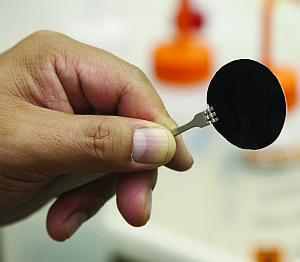
Figure 4: Experimental Chemical Protection Material.
In a parallel effort, scientists at the National Institute of Standards and Technology (NIST) are developing their own CNT-based materials that they believe have the potential to degrade certain chemical nerve agent weapons, such sarin, tabun, and soman. The CNTs in the fabric are manufactured of a carboxylic group (COOH) reacted with copper chloride. The copper atoms serve to degrade the nerve agent molecules. While still early in the development phase, if successful, the fabric could be used to manufacture protective clothing for use in chemical “hot” zones [5].
A somewhat related application has researchers at the Massachusetts Institute of Technology (MIT) working on the development of a family of CNT-based chemical sensors. Led by professor Michael Strano and funded by MIT’s Institute for Soldier Nanotechnologies, the first set of sensors developed makes use of the natural fluorescence properties of CNT. Coupling the CNTs with molecules that could bind to specific “target” molecules such as Sarin or other toxic agents, the sensor reaction causes the fluorescence to increase or diminish in the presence of the agent, providing an indication of the presence of the specific toxin. In another of their applications, the CNTs are coated with peptides normally found in bee venom, known as bombolitins, resulting in a sensor that is reactive to nitro-aromatics, which are used in explosives, such as TNT. The reaction causes a shift in the wavelength of the CNT’s fluorescence. By using an array of CNTs coated with different bombolitins that react to molecules of different agents, it should become possible to identify the type of explosive. The CNTs could also detect the breakdown of such explosives as the materials degrade [6]. MIT’s next step in their sensor development is to integrate the sensor into a collection and analysis apparatus.
Structural Composites
Composites are commonly used in manned and unmanned aircraft structures. However, to provide sufficient protection from lightning, as well as providing electromagnetic interference (EMI)/radio frequency interference (RFI) shielding, metallic meshes are often added as a layer (or layers) within the composite. These add weight, which reduce mission time and payload capability and/or increase fuel requirements. Applied NanoStructured Solutions (ANS), a subsidiary of Lockheed Martin, has developed infused carbon nanostructure (CNS) materials and processes that allow MWCNTs to be infused with materials such glass, carbon, or ceramic fibers to produce customized composites that can be used in a variety of applications, including military aircraft structures [7]. Aside from allowing for reduced weight and improved structural strength, the MWCNTs used in the process are highly entangled, allowing the composite material to act as a Faraday cage, protecting the structure from lightning strikes while providing EMI and RFI shielding. The CNT’s conductive properties also facilitate health monitoring of the structure’s integrity. In addition, the CNS materials of ANS can be used to replace the braiding or shielding used on electrical cables in virtually any application, providing superior shielding while reducing the weight by 30% or more. Reducing the weight, while at the same time providing a more robust solution through the use of CNS materials, positively affects mission time, payload capability, fuel savings, reliability, and longevity. Moreover, for portable devices, reduced-weight helps mitigate human fatigue.
The U.S. Army Research Laboratory is investigating CNT-based composites for helicopter rotor blades, but for a somewhat different reason. Presently in helicopter design, there is a trade-off between the stability of the aircraft and the amount of vibration transferred from the blades to the aircraft. That is, a stable design tends to transfer a significant amount of vibration to the aircraft, and vibration is one of the primary causes of excessive maintenance and repair. Ideally, it would be desirable to dampen the vibrations without adding extra weight or jeopardizing stability. Rotor blades manufactured from a CNT composite may provide the answer. The CNT-based blades are expected to dampen vibration energy through the friction within the CNT matrix in a composite of carbon fibers. Dissipating vibration in the blades would improve stability while lessening the amount of vibration that is transferred to the aircraft—and without adding weight. The result should be an aircraft, such as the Apache pictured in Figure 5, that is capable of supporting increased payloads, better fuel efficiency, higher speeds, and lower maintenance costs. The CNT-based blade designs could be ready for fielding in the next generation of the fleet [8].
Figure 5: AH-16 Apache: Greater Payloads and Faster Speeds with CNT-Based Rotor Blades.
Camouflage
A few of the more exotic applications for CNTs involve the exploitation of their thermoacoustic abilities. Last decade, Chinese scientists discovered that a thin-film sheet of CNTs exhibit a thermoacoustic property; by applying a varying electrical signal to the sheet CNTs, the CNTs heat the surrounding air in reaction to the electrical signal, where the heated air generates a sound wave. Dr. Ali Aliev of the University of Texas proposed that the Navy could exploit this phenomenon by using CNT “speakers” to enhance sonar systems, while submarines could also use the speakers as noise cancellers, making the submarines more difficult for the enemy to detect and locate [9]. However, in a quite different application, Dr. Aliev demonstrated how the thermoacoustic effects of the CNT sheet can be used a cloaking mechanism; the heated air essentially creates a mirage effect, bending light around objects, causing them to be “invisible.” It has been speculated for some time that the U.S. military has been working on, and has demonstrated, what they say is a nanotechnology-based cloaking technique. Whether this technique is based on the CNT phenomenon demonstrated by Dr. Aliev has not been confirmed.
Further, a research team at the University of Waterloo invented (patent pending) another means of camouflage based on CNTs. The team’s CNT “paint” exploits the anti-reflective property of layered CNTs, which can absorb light in the spectrum spanning 0.2 to 200 µm,covering both the visible and infrared (IR) ranges. The flexible coating can be applied to virtually any surface, including textiles, and is thermally and chemically stable. Because CNTs quickly reach thermal equilibrium with their environment, a coated object quickly adapts to the local background temperature, rendering the object “invisible” even to most night vision-equipped personnel [10].
Energy Efficiency
The Power and Energy Strategy White Paper [11], prepared by the U.S. Army Capabilities Integration Center in 2010, outlined the increasing importance of energy to the base, the Warfighters, and their vehicles. An example of the concerns included in the paper is that of battery usage. Presently for a 72-hr mission, the average Warfighter carries about 70 batteries of 7 different types, weighing a total of approximately 16 lbs. The paper suggests a number of initiatives that should be pursued to address this and other aspects of power and energy, including a need for:
- Increased Energy Efficiency
- Decreased Weight of Energy Devices
- Innovative, Integrated Electrical Power/Energy Solutions, Ranging from Charging to Energy Harvesting.
CNTs can play a number of important roles toward achieving several of the Army’s goals. CNTs are proposed for use in a range of small primary and secondary batteries. At the anodes of lithium ion batteries, the high surface area afforded by CNTs increases the capacity and deliverable current and promises improved lifetime. These advantages should allow for a decrease in the number and weight of the battery load required per Warfighter. CNTs are also being investigated for use in lead-acid batteries, leading to longer life in standard vehicles, thereby decreasing maintenance. And as the Military Services transition part of their vehicle fleet to electric or hybrid power, high-capacity lithium ion batteries with CNT anodes will serve to increase the operating and service life of CNT battery cells [12].
Super-capacitors based on CNT technology are also being investigated as a lower-cost, lower-weight alternative to some of the batteries used by the Warfighter. If successful, these would enjoy a much longer cycle life than can presently be attained by rechargeable lithium ion cells. Additionally, solar cells, whether used in the field or in fixed installations, are an important means of generating electrical power and reducing the reliance on fossil fuels. Solar arrays, tents, and battery chargers are presently in use in the field by the military. The use of a CNT coating on solar cells or thermal devices, such as the device pictured in Figure 6, can increase their efficiency by reducing reflected light/heat, thereby capturing and producing energy more efficiently [13].

Figure 6: CNT-Based Solar Cells Promise Greater Conversion Efficiency.
The Warfighter’s increasing dependence upon electronics to provide more (and more powerful) functionality to the array of gear he/she must carry leads to a demand for increased electronic processing power and memory requirements. To provide the functionality, yet in more compact packaging, the military is ultimately reliant upon advancements made in the commercial world of electronics to reap the benefits of high integration. Since the 1960s, the electronic industry has, more or less, abided by Moore’s Law (the doubling of transistor density occurs every 18 months) when it comes to scaling of traditional, silicon-based devices. With today’s high-end devices approaching the atomic limits of traditional silicon complementary metal oxide semiconductor (CMOS) devices, researchers are investigating non-silicon alternatives to keep pace with increased device density requirements. Not surprisingly, the size and the electrical (and thermal) properties of CNTs cause them to be a center of research into the next generation of electronics technology. CNT-based transistors have been in research since the 1990s. CNT-based transistors offer the potential of extremely small transistor dimensions and high-speed operation, as well as reduced power consumption vs. silicon alternatives [14, 15]. While significant progress has been made in the past decade toward the manufacture of CNT-based transistors, much more work is required before they will be commercially viable.
Conclusion
Seldom has a single technology held so much promise as does CNT, and in such a wide array of applications, many of which are targeted for, or directly beneficial to, the military. Whether they are used to improve protective gear, structural apparatus, energy efficiency, or other applications not documented in this article, CNTs offer the promise of increased safety and effectiveness of our Service personnel.
References:
- AZoNano. “Carbon Nanotubes and Buckytubes – The Complete What, When, How, Why and Applications.” http://www.azonano.com/article.aspx?ArticleID=1597.
- Y. R. Mahajan. “Pursuit of the Ultimate Body Armor.” Nanotech Insights, Centre for Knowledge Management of Nanoscience & Technology, July 2010.
- Peter Wray. “Carbon Nanotube Fibers Woven for Military Armor.” http://ceramics.org/ceramic-tech-today/international/carbon-nanotube-fib…, the American Ceramics Society, December 2010.
- Anne M. Stark. “New Military Apparel Repels Chemical and Biological Agents.” https://www.llnl.gov/news/newsreleases/2012/Oct/NR-12-10-06.html.
- Global Security Newswire. “Researchers Develop New Fabric That Protects Against Chemical Weapons.” http://www.defenseone.com/technology/2014/05/researchers-develop-new-fab…, accessed, July 2014.
- Anne Trafton. “Finding a needle in a haystack.” http://newsoffice.mit.edu/2011/explosive-detection-0510, accessed July 2014.
- Lockheed Martin Corporation. “Infused Carbon Nanostructures.” http://lockheedmartin.com/content/dam/lockheed/data/corporate/documents/…, accessed July 2014.
- T’Jae Gibson. “Army Researchers Chase Helicopter Performance Gains.” http://www.army.mil/article/105134/Army_researchers_chase_helicopter_per…, accessed July 2014.
- American Chemical Society, “Submarines could use new nanotube technology for sonar and stealth.” http://www.sciencedaily.com/releases/2010/07/100714121743.htm, Accessed July 2014.
- University of Walterloo. “Carbon Nanotube Coating for Visible and IR Camouflage.” https://uwaterloo.ca/research/waterloo-commercialization-office-watco/bu…, accessed July 2014.
- U.S. Army Capabilities and Integration Center. “Power and Energy Strategy White Paper.” Research, Development and Engineering Command – Deputy Chief of Staff, G-4, 1 April 2010.
- Bill Scanlon. New Research Bolsters Batteries with Nanotubes.” National Renewable Energy Laboratory, http://www.nrel.gov/news/features/feature_detail.cfm/feature_id=13370, June 2014.
- Alex Saltarin. “MIT Develops Hot Carbon Nanotubes that Lets Solar Panels Draw More Sun.” Tech Times, http://www.techtimes.com/articles/2813/20140120/mit-develops-hot-carbon-…, January 2014.
- Sebastian Anthony. “IBM Creates 9nm Carbon Nanotube Transistor that Outperforms Silicon.” http://www.extremetech.com/computing/115657-ibm-creates-9nm-carbon-nanot…, 2012.
- Tom Abate. “A First: Stanford Engineers Build Basic Computer Using Carbon Nanotubes.” news.stanford.edu/news/2013/september/carbon-nanotube-computer-092513.html, September 2013.


